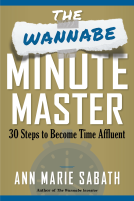
Dealing with Meetings You Can't Stand, Meet Less and Do More
by Rick Brinkman
This title was previously available on NetGalley and is now archived.
Send NetGalley books directly to your Kindle or Kindle app
1
To read on a Kindle or Kindle app, please add kindle@netgalley.com as an approved email address to receive files in your Amazon account. Click here for step-by-step instructions.
2
Also find your Kindle email address within your Amazon account, and enter it here.
Pub Date 5 May 2017 | Archive Date 22 Apr 2018
Talking about this book? Use #DealingWithMeetingsYouCan'tStand,meetLessAndDoMore #NetGalley. More hashtag tips!
Description
The proven process for making the most of every business meeting―from the coauthor of the international bestseller Dealing with People You Can’t Stand
From Dr. Rick Brinkman, one of the bestselling masterminds who made Dealing with People You Can’t Stand a little less painful―and a lot more productive―comes the much-needed cure for that time-wasting, headache-inducing, soul-sucking plague known as meetings. This proven step-by-step method addresses the most common problems that derail a meeting: preparation, people, process, and time.
Dr. Brinkman provides key insights into the human behaviors that lead to unsuccessful meetings, along with psychologically-based tactics for addressing them. You will learn how to:
• get rid of unnecessary meetings
• start and end on time
• develop and execute an effective agenda
• address disruptive and problem behaviors
• balance participation so assertive people don’t dominate and passive people say what they really think
• eliminate tangents and maintain focus
• ensure effective follow-up
This practical and easily implementable process applies to in-person as well as virtual meetings of any size. Filled with helpful checklists and change-making strategies, Dealing with Meetings You Can’t Standwill turn the most boring conference room into a fast-moving model of efficiency, energy, and enthusiasm. You need not suffer in a meeting ever again.
Advance Praise
BLOG CRITICS REVIEW
We’ve all suffered through the tedious, hour-wasting, headache-inducing trap of being stuck in a meeting we can’t stand. Claustrophobia of the worst kind sets in, and instead of being productive, we feel practically comatose. Every wonder why? The reasons are laid out in this engaging and smart new book by Dr. Rick Brinkman, Dealing with Meetings You Can’t Stand: Meet Less and Do More (McGraw Hill, 2017).
Brinkman is a master at helping people tackle the worst sides of working — before Meetings, he authored Dealing with People You Can’t Stand, which is a global bestseller, translated into 25 languages. That’s no surprise, given the title: Brinkman is a no-nonsense communicator who approaches the most common ailments of the workplace with equal parts empathy and humor — in Meetings he quotes noted cartoonist Dave Barry in the beginning. As with People, this book on meetings is fascinating, entertaining, and yet makes perfect sense, offering tangible strategies for effectively changing the game.
Brinkman has divided up the four main trouble spots that can turn a well-intentioned roundtable into a train wreck: preparation, people, process, and time. Of preparation, for instance, when a meeting is called without a clear agenda or purpose — or starts with “any other business?” — or has either not enough people or too many people present, it’s a recipe for disaster.
Of people, the problems are as varied as difficult personalities: people who talk over each other, people who refuse to talk in the meeting but have plenty to say afterwards, people who are unprepared, who waffle, who snicker under their breaths, who know everything. Process and time are equally illuminated: readers will no doubt have a number of laughs as well as ah-hah moments.
What the good Dr. Brinkman does that sets this book apart from the dozens of “how-to” business books out there is provide a tangible fix. His very apt, clever, workable analogy works from start to finish to helps us reframe every aspect of a meeting — and land safely and on time. Think of a meeting like a long- distance jet flight, he suggests, including having a clear flight plan, a designated Air Traffic Controller, and a place to park tangential discussions — on the tarmac, of course.
The goal: an efficient, quick, enthusiastic plane ride with little turbulence that arrives exactly as planned. I’ll be it works.
Another plus to this very savvy handbook are the “Great Moments in Meetings” tales — light-hearted but revealing true-life accounts of meetings that actually worked. The upshot is that successful meetings are anything but free-for-alls: a group of engineers diligently place their cell phones in a basket as they arrive; an executive locks the door when the meeting starts so latecomers can’t come in.
On the other hand, when people drone on in a global conference call, it’s noticed. When someone acts disruptive, that’s noticed too. The point is that we all know when a meeting isn’t working. Now we also know why — and how to fix it.
Brinkman brings so much to the table with this book that it feels like an incredibly consolidated encyclopedia of how to plan a meeting, have a meeting, and follow up after a meeting. It’s also a book on why you really don’t need to necessarily have a meeting in the first place.
It’s clearly, breezily, insightfully written, tightly organized, and charmingly illustrated. And it’s sure to be an asset to anyone who has to deal with meetings. Read it and follow it, and it’s likely your people will thank you — and then ask you to borrow the book. I recommend telling them to buy it themselves.
US DAILY REVIEW
If you want to make everyone on your team at work feel like you’ve gotten absolutely nowhere, just hold a meeting. Meetings have a knack for bringing out the worst in us, from disengagement to irritation to that post-mortem eyeroll at the watercooler. Yet we can’t stop having them — and shouldn’t we have them? Dr. Rick Brinkman’s new book, Dealing with Meetings You Can’t Stand: Meet Less and Do More proves there’s a far better and more productive way to hold meetings, and it lays out a proven approach in a highly entertaining style.
Brinkman is an expert at “conscious communicating” with a roster of previous books, including Dealing with People You Can’t Stand. His new book is filled with similarly clever illustrations and charts, witty phrases, first-person tales, and it’s both a great read and an effective method. First of all, the next time you plan a meeting, don’t even think of it as a meeting. Instead, think of a meeting as a plane flight — and that you’re responsible for everyone having a safe, pleasant, on-time journey. All those people sitting around the table or in those little thumbnail images on your remote meeting app are your passengers. And you can take this analogy as far as you want it to, since Brinkman enthusiastically covers all the angles: metaphorical hijacking, too much baggage, unpleasant passengers, confusing directions, headwinds, and the consequences of landing too late for people to make their next“flights.”
Back up a moment, because rather than spoil the fun — and it is a fun read, and very refreshingly so — let’s just talk about the why we have to have meetings in the first place. The reality is, we don’t, according to Brinkman. Most of us don’t ask if we should even be having a meeting, since we’ve come to believe that meetings are a part of the day like rain is a part of weather. But Brinkman insists we do ask why. we’re calling that meeting. If it’s to present information, he asserts, don’t do it. Meetings are not the time to present the new 25 page instruction manual or corporate identity report. They’re the time to talk about it. And there are just way too many pointless meetings being held, he says.
There’s a key difference between information and interaction, in other words. If you’re holding the meeting to get everyone discussing and strategizing about that document, terrific. First, send the materials out well ahead of time, and make it clear you expect it to be reviewed and understood before people walk in the door. This may well ring a bell with some readers, and it should: Brinkman is a master at illuminating just why common sense should prevail and doesn’t when it comes to gathering us all together. He also explains the immense importance of a well-thought-out agenda, which should include every single item to be covered, realistic time allotments for each one, the purpose of discussing them, and also what is expected of the people talking about them.
The bottom line is control: of time, of discussion, and mostly, of people. If you want to control the meeting, you have to frame it clearly, set expectations, and have tools in place to help rein in the variables, such as that “what exactly are we talking about here” confusion that makes everyone shift a little farther back in their seats. Brinkman provides savvy and subtle ways to control those disruptive personalities that tend to hijack the goings-on. We’ve all been there to listen to the ramblings of a Know It All or a Think They Know It All — as the author labels them. We’ve all heaved a sigh when someone starts seizing control of the discussion because they don’t have faith in the ability of the facilitator — a bullying personality type Brinkman calls a Tank. Those naysaying headshakers who frown endlessly at every single idea? They’re judges, notes Brinkman.
As guidebooks go, this is a good one to set prominently in your office and refer to frequently. It’s meant to provide you with better techniques that you can improve on with time. The more you craft a workable agenda, the better you’ll get at it, for instance. And the more people see you able to defuse the disruptions, the less disruptive they become. Master the tools in this book and use them to run your next meeting, and you’ll feel a remarkable transformation take place: people may actually ask you when the next meeting is. But if you’re not the one in charge, don’t despair. Brinkman provides a script for making tactful yet convincing suggestions for trying a better method. In this book, he’s thought of everything.
Average rating from 8 members
Featured Reviews
If you've been to a meeting or two and never gained much from it then this book is what you ought to read. The author takes a look at what's involved in a meeting from the people, place, agenda and even the preparation that went into the meeting. His tone of writing is both friendly as it's astute and you'll learn a new thing or two. For me it was the importance of a preflight checklist, where I have to know the reasons for calling for a meeting and to whom it'd be relevant. Thank you NetGalley for the eARC. Every reader who has been called to a meeting at some point in their life would enjoy this book, and it's also a wake up call on productivity for leaders and bosses.
 Shelly H, Reviewer
Shelly H, Reviewer
I wish I could distribute a copy of this book to everyone in every office I walk into! It is a bit of a game changer for meetings and general office politics. Who hasn’t encountered the tank, the grenade, the know-it-all, the winer, etc.? Author Rick Brinkman breaks down what makes people behave as they do in certain scenarios and discusses the best ways to curtail their negative behavior for more productive meetings. The suggestions for utilizing individuals to fulfill three essential roles in facilitating a successful session are helpful and insightful. Does everyone need to come to the table? I would recommend reading this thoughtful, useful and practical book to find out. Many items in this book can also be applied to improve the general office environment and be used in your personal life as well. I give it a solid 5 stars.
 Reviewer 446033
Reviewer 446033
#DealingWithMeetingsYouCan'tStand,meetLessAndDoMore #NetGalley
Very well explained the strategies to take during the meetings to pass the message and avoid conflicts.
 Beth B, Reviewer
Beth B, Reviewer
This book actually had some pretty good ideas that I'm going to try to implement where I work. Some of them were pretty standard (such as "start and end on time"), but others were creative and I think could be very useful (the agenda setting procedure and format, for example). As with most of these types of books, I do wish there was more about how to actually implement this (aka get people to go along with it and get managers to actually do it).
Readers who liked this book also liked:
Michelle Johnston, Marshall Goldsmith
Business, Leadership, Finance, Nonfiction (Adult), Self-Help
Ann Marie Sabath
Business, Leadership, Finance, Professional & Technical, Self-Help
Todd Irwin
Business, Leadership, Finance, Nonfiction (Adult), Professional & Technical








